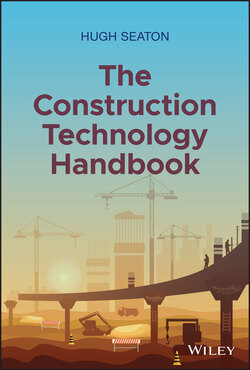Читать книгу The Construction Technology Handbook - Hugh Seaton - Страница 27
Use of technology is a technology
ОглавлениеEvery time you use a powertool, or a non‐powertool for that matter, you are applying knowledge, and that is a technology. Processes, know‐how, these are all a kind of technology, they are a means of getting something done for a purpose.
Every new tool requires that you learn some things. A new kind of hand tool takes some practice, and real‐world fiddling around to understand how to use it. This is, again, a kind of technology. For these sorts of non‐digital tools, though, there's really no point in calling it “technology,” it's just called “know‐how.”
The reason I call out this definition of technology, as the how to do things, not just the what to use, is because unlike non‐digital tools, software and digital solutions work in very predictable, narrow ways that you must learn in a very different way from how you learn a non‐digital tool.
No one would suggest that you learn to use a drill without ever holding one. But you can learn a ton about Procore without ever getting on the platform, through their eLearning. You can learn everything you need to know about Revit from tutorials and videos, and the same is equally true for almost all software‐based products.
The technology for learning is, I think, one of the biggest changes coming to construction. This learning is as easy as watching a YouTube video, and can be done from a phone, desktop, or tablet anywhere.
In the past, workforces have been encouraged to “adopt” things as if it were just one big change, then you'd get back to a steady normal. And maybe that was true in the 1970s, but it just isn't true anymore.
Software doesn't get updated every few years and get shipped to you like Windows in the 1990s. It is a website hosted somewhere else, in the “cloud.” It is constantly updated, redesigned, replaced. The Prolog of the 2010s is the Viewpoint of today, and the Procore of tomorrow isn't going to look like the Procore of today, because it will keep evolving.
This poses a risk for the everyday Joe and Jane who don't really want to focus on technology, but actually love doing their real job, whether that be framing walls, setting up mechanical systems, or stringing up electrical systems. The solution is to understand the basics of how software, AI, BIM, Prefab, and other technologies work.
